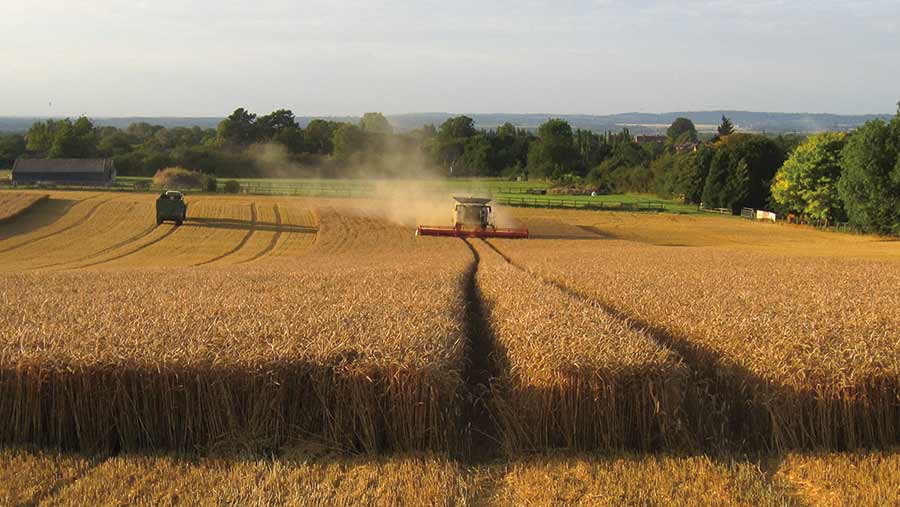Top tips to help you switch to controlled-traffic farming

Making the switch to controlled-traffic field operations can seem a daunting prospect, but with the right preparation, farmers can still expect to begin reaping the rewards of improved soil structure and better yields within a couple of years.
A group of growers and experts have given their tips for would-be CTF adopters, including which machines to buy first and what to expect once the system is up and running.
Julian Gold manages the Hendred Farm Partnership in Oxfordshire and introduced CTF in autumn 2011.

Julian Gold © Peter Hill
“Our 10m/30m CTF system has reduced compacted area to just 20%, trimmed power demands and given us a big increase in work rate. It has stretched the stale seed-bed period so much that we could cultivate for a second flush of blackgrass if necessary.”
- Harvest CTF is the most important part of the system and it operates best when the combine header width is one-third of the tramline spacing.
- Good combine and trailer driver communication is key to make sure trailers end up in the right place at the right time.
- Don’t get hung up on needing RTK guidance on everything – after year one, wheelways are visible, so you only need good guidance on the drilling tractor.
- All field passes are parallel, so poor chopping and spreading can’t be alleviated by angled cultivations. Change the blades regularly and be prepared to stop combining in the evening when chop quality deteriorates.
Tim Chamen is a CTF consultant at Smart Agri Systems.

Tim Chamen © Peter Hill
“CTF studies have revealed a reduction of up to 70% in energy consumption as soils become easier to work and less tillage is needed, as well as a 35% reduction in fuel costs.
According to our surveys, a 10-20% gain in yield is also common and is achieved nearly 100% of the time.”
- Make sure you also know the exact working width and dimensions – such as the axle gauges and tyres – of whatever machinery you propose to use.
- You have to want to make it work and you have to be comfortable with adopting a much-reduced tillage regime and the agronomic issues associated with it.
Nick August operates a controlled-traffic system on Cotswold Brash soils in Oxfordshire.

- It is important to understand the benefits of CTF and make them clear to members of the farm team, which will help make sure that all haulage vehicles stay on tramlines.
- Start with a clean crop at harvest, leave as long a stubble as your cultivations can handle and chop and spread straw and chaff evenly across the full cutting width of the combine.
- Don’t subsoil tramlines, but allow in-fill from surface cultivations to keep them as smooth as possible for spreading and spraying tractors.
Jan Jönsson manages Lydinge Farm, Skone in Sweden, where CTF has been practised since 2006.
“Choosing 8m tracks was the cheapest way to find out if CTF would suit us because we already had equipment that was at least 8m or 24m wide. We found a 9.5m Horsch Terrano FG cultivator and took off the end sections to make it 8m. It pulls an 8.2m Väderstadt Carrier, doing enough work in one pass to be ready for the Horsch Airseeder CO.”

- Don’t start with old problems, so get on top of any drainage issues beforehand.
- Some fields that still suffer from compaction and drainage problems still have a way to go before they are ready for such a change, but CTF definitely helps.

